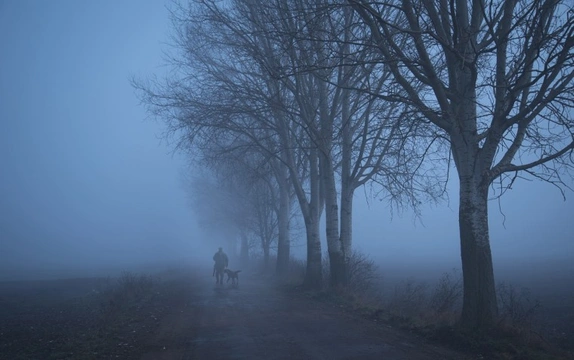
Keep you and your dog safe when walking in the dark
Walking a dog safely in the dark means factoring in a number of different potential risks and hazards. There are the obvious ones like ensuring you don’t trip over something, and ensuring other road users can see and so, avoid you; and more obtuse risks too, like getting lost because you can’t orient yourself in the dark, and becoming a target for muggers and other threats.
However, walking dogs in the dark is unavoidable for many of us in the winter, and walks in the dark can also be very rewarding, allowing us to see and hear wildlife that is sleeping during the day, and enjoying the whole atmosphere and usually, peace and quiet.
This article will outline seven things you should do to keep you and your dog safe when walking them in the dark at any time of year. Read on to learn more.
Don’t venture off the beaten path
Try to stick to known routes and literal paths and walkways when walking your dog in the dark; off-roading is best saved for when you can see what you’re doing and vitally, where you’re putting your feet.
Deciding to try a new route or heading off into the unknown when it’s dark and you’re out with your dog isn’t always a good idea, as you could easily get lost or run into difficulties (like livestock that sees you as a threat), as well as finding it hard to orient yourself or explain to others where you are if you needed to call for assistance.
Try to stay out in the open, but vary your walking routes
Staying on paths and set routes where you can follow a track to avoid getting lost or missing a hazard is wise, but you should try to vary your actual routine in terms of where you go and when you go there.
This is in order to ensure that in the very unlikely event that someone with bad intentions takes an interest in you and tries to track your movements, they will be unable to do so with any reliability.
Make sure you can see and be seen
Make sure you can see by using lights and torches in order to avoid tripping over anything, and fit lights to your dog too so you don’t lose them in the dark. It is also important to ensure your can be seen by others on the roads and paths, so incorporate reflective gear too, and always carry a backup when it comes to torches or batteries, and use more than one light on yourself and your dog in case one fails.
Keep your dog on a lead
It is wise to keep your dog on a lead for walks in the dark so that you don’t lose them, particularly in areas where you cannot see boundaries or exits clearly.
If there is an enclosed safe space to walk dogs in that also has exits that are well lit so you can ensure they’re closed, plus your dog has lights to enable you to see where they are, supervised off-lead time should be fine.
Let someone know where you’re going and when you’ll be back
Leave a note, send a message or tell someone when you’re taking your dog out after dark, even if you usually do this at the same time each day. Let them know where you plan to go and when you intend to get back; and always check in with them when you get back too, as if you reliably forget to do this or don’t arrange to, they won’t realise one day if you’re absent longer than you should be.
There are also apps you can download to log your route and inform others from your smartphone too, which can be really useful.
Carry your phone and a method of sharing where you are on your walk with it
On which note, carry your phone with you on walks in the dark with your dog, ensure it is charged, and that it is enabled with a means of sharing your location or pinpointing where you are to tell others.
Don’t appear distracted or that you’re not paying attention to your surroundings
Finally, when you’re walking your dog in the dark, it is even more important that normal to ensure that you’re paying attention to your dog and the safety of both of you, and that you’re not instead staring at your phone or idly daydreaming!
This is important not only to ensure you keep track of your dog and make the walk interactive and fun for them, but so that you remain aware of your surroundings and any potential threats. It also helps to ensure that you don’t look like an easy or unaware target to potential threats either.
Don’t fixate on your phone, and it isn’t a good idea to wear headphones when walking your dog in the dark either.



